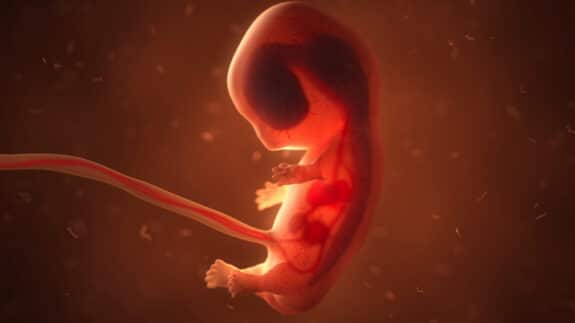Approximately 20% of all women are at risk for miscarriage. And, according to Dr. Kaltum Adam, an honorary clinical researcher at the St. Mary’s Hospital in Manchester, only 20% of the women at risk will actually miscarry. Until now, however, there was no way of knowing which women would actually miscarry.
Not knowing which women would actually experience a miscarriage requires doctors to take precautionary methods for all women who were considered at risk. This often results in taking precautions and performing tests that may be unnecessary and even dangerous. Then there were women that might have needed the testing that were overlooked because other tests were considered normal. In the end, when it came to a high risk of miscarriage, all doctors and patients could do is sit back and hope for the best.
This, of course, is really not acceptable. Dr. Adam and his team wanted to find a way to accurately determine which at risk women would actually miscarry. Doing this would protect some women from dangerous testing procedures while ensuring that extra care was taken when evaluating the women most likely to miscarry.
To help them, researchers on Dr. Adam’s team evaluated 112 pregnant women that were at risk for miscarriage. All of the women were between six and ten weeks pregnant. All of the women that participated in the study received full testing. Ultrasounds, hormone testing for both progesterone, and charting that tracked bleeding and pain were all used to evaluate the women. In the end, the researchers determined that there were six factors that were most relative to the chance that a woman would miscarry – progesterone levels, weeks of gestation, length of the fetus, a history of subfertility, frequency of bleeding, and hCG levels.
When looking at each factor individually, the researchers still weren’t any closer to figuring out which women were actually going to experience a miscarriage. They did find, however, by placing two of these risk levels together, they were able to develop a “Pregnancy Viability Index,” or PVI, which gave them an accurate means for determining which pregnancies were most likely to result in miscarriage.
“By the end of the study period, the PVI was able to accurately predict the pregnancy outcome of 94% of women who had ongoing pregnancies and also predicted the outcome in 77% of women whose pregnancy ended in miscarriage,” Dr. Adam reported. And while the system is not perfect, it is still a massive improvement on the current system.
The new PVI formula will enable doctors to target the women that are at the highest risk for miscarriage to ensure that they are receiving the treatment that they need. Additionally, by knowing which women are at the highest risk for miscarriage, doctors and researchers may be able to find more interventions to help rescue these pregnancies before the miscarriage actually occurs. Only time will tell for sure, but this recent news is definitely a step in the right direction.
Related Posts:







